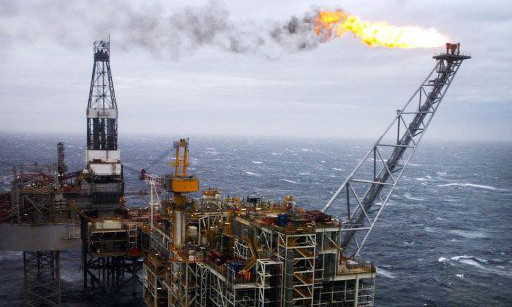Scotland’s geographical share of oil revenues from the North Sea fell by over 75% in the first three months of 2015, according to Scottish Government figures.
The quarterly national accounts show that the amount received in tax receipts between January and March was £168 million, down from £742 million in the final three months of 2014.
In the first three months of 2014, £969 million was generated for Scotland’s geographical share of oil revenues.
The industry has suffered from the collapse of global oil prices, which have tumbled sharply since June last year.
The Scottish Conservatives leapt on the figures, which were published earlier this month, stating that they demonstrated “how wildly wrong” the SNP’s pre-referendum calculations had been.
The party said the figures also further demonstrated the case against full fiscal autonomy for Scotland – an SNP policy.
In its oil and gas bulletin published in May 2014, the Scottish Government estimated that oil revenues would be between £15.8 billion and £38.7 billion between 2014/15 and 2018/19.
It latest bulletin, published in June this year, said revenues could be as low as £2.4 billion for 2016/17 to 2019/20, with it highest estimate at £10.8 billion, based on a best-case scenario of the oil price returning to 100 US dollars per barrel.
Scottish Conservative finance spokesman Murdo Fraser said: “The plunge in oil revenues for the first three months of this year is incredible.
“Whichever way you look at it, and with the best will in the world, there is just no way an independent Scotland could survive on this.
“We knew the price of oil was volatile, and that this would be a risk. But to see such a radical drop is alarming.
“Thankfully, within the strength of the UK, this shock can be absorbed.
“It’s time the SNP acknowledged this benefit, instead of constantly trying to drag Scotland to a place where it would be utterly reliant on these dwindling receipts.”
Deputy First Minister John Swinney said: “Our oil and gas bulletin, published in June, confirmed that Scotland remains, by some margin, the biggest oil producer in the entire European Union.
“Recent provisional figures from DECC suggest that May saw the most oil and gas produced in the North Sea since March 2012. If this trend is sustained production could increase this year for the first time in 15 years.
“Oil, however, is a bonus, not the basis of Scotland’s economy. Even without it, Scotland’s output per head ranks third of the 12 countries and regions of the UK, behind only London and the South East.”
